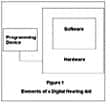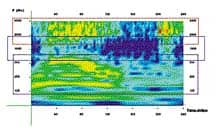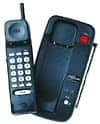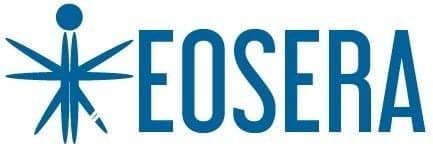While sometimes taken for granted, earmolds must seal the ear properly to prevent acoustic feedback, provide a secure fit for the client while being easy enough for him/her to insert and be cosmetically appealing. The fact is that a lot can go wrong during the earmold selection, impression-taking and manufacturing processes. Here’s how to avoid many of the pitfalls.
An earmold is an individually fabricated ear insert that channels the sound reproduced by the hearing aid receiver to the eardrum. A good earmold should properly seal the ear to prevent acoustic feedback, provide a secure fit, be comfortable and easy to insert, and be cosmetically appealing.
Earmold Styles
Earmolds are made in two basic styles: concha and canal. Each style has several sub-styles that differ mainly in cosmetics (see Fig. 1). The most common concerns in selecting the earmold style are acoustic seal, retention, insertion and comfort. This article will discuss these factors and others that need to be considered relative to the impression-taking, selection, and manufacturing processes, and provide practical tips for selecting appropriate earmolds.
|
Fig. 1. Common Earmold Styles |

|
| Concha earmolds (top) occupy the ear concha and canal and can be made in the standard, shell, skeleton, or non-occluding configuration. The standard mold fits in the entire concha. The shell mold has the bowl shelled out for an enhanced cosmetic appeal. The skeleton mold has the concha area reduced even further to a ring, or _ ring. Concha molds can be made with an extended helix for better retention.
Canal earmolds (bottom) include the half-shell, canal and canal-lock molds. The half-shell mold occupies the lower concha. The canal mold fits in the canal aperture. The canal-lock mold possesses a small plastic tail (lock) which is extended to the ear bowl. The lock rests against the antitragus to enhance the mold’s retention. |
Acoustic Seal
Contrary to the common belief that “the more of the ear concha occupied by the mold body the more effective the seal,” two separate studies have shown that all earmold styles are capable of providing an equally effective acoustic seal. Kuk1 found that there was no difference in real ear insertion gain (REIG) among the shell, canal and skeleton earmolds, while the standard mold permitted the least amount of maximum REIG. Analyzing real ear attenuation test (REAT) data, Pirzanski2 noted that, in most subjects, canal molds sealed as effectively as standard molds, if not better. In both studies, the differences measured in sealing effectiveness among the earmolds were considered minor.
These findings support this author’s position that acoustic seal in most earmolds (and also other ear-level custom hearing instruments) occurs in the ear canal, commonly between its first and second anatomical bend.3 This means that the bulk of the mold at the concha is irrelevant as a factor contributing to the earmold’s seal. However, it should be clearly stated that the above opinion is correct under four conditions:
- The ear impression is properly taken;
- Structures of the patient’s ear provide sufficient in-canal retention;
- Mandibular movements do not break the seal, and
- The earmold is skillfully manufactured.
Obviously, all these conditions are not always met.

Fig. 2. The action of the jaw opening breaks the earmold seal in the ear canal and allows for sound leakage and acoustic feedback. The size of the earmold at the concha is irrelevant in maintaining an effective acoustic seal. |
Fig. 2 shows a full concha and canal earmold photographed in the same bisected control ear investment. Both molds are made from the same closed-jaw impression. The investment is cast from an open-jaw impression taken from the same subject’s ear. While the posterior canal wall is sealed properly, both molds are obviously loose at the anterior wall. A gap of a varying width extends from the canal second bend to the tragus area. These loose fittings result from the jaw actions that widen the canal and allow for sound leakage and feedback.4
A similar scenario can be drawn for an earmold that fits loosely because it was made from an impression taken with light impression material. Light material does not stretch the ear cartilage and allows for the resulting mold to leak acoustically.
The sound escaping from the ear always follows the shortest—never the longest—path to the aid’s microphone. The path runs along the canal wall (commonly the front wall), above the tragus, and straight toward the hearing aid microphone. A larger earmold concha, an extended helix, or a raised tragus will not prevent acoustic feedback because the concha, helix and tragus do not contribute to the mold seal. They are simply not in the path of the leaking sound. At first glance, the tragus area appears to provide additional seal for the shell mold shown in Fig. 2a. In reality, however, the tragus contributes little (or nothing) to the seal because it forms a protrusion over the line of the head, and the leaking sound escapes sideways.
It is imaginable, of course, that in some instances the concha area of an earmold can reduce sound leakage from the ear canal to the extent that sufficient gain is obtained before acoustic feedback occurs. However, in the presence of more effective anti-feedback techniques, the practice of fitting full concha molds to prevent feedback should be considered unsuitable, unless the mold retention is the concern.
Studies show that the impression-taking technique is far more critical for the proper acoustic seal than the mold style and material.3,5-9 For an enhanced seal, the impression should be taken with standard-viscosity material while the patient’s mouth is wide open.
Retention
The efficiency of earmold retention depends on natural prominences present in the ear concha and canal. Retention for full-concha molds occurs at the helix, tragus and antitragus areas. Retention for canal molds is found in the ear canal, commonly at the ear’s second bend where the canal flares past the ear aperture.10
Numerous reasons can be cited for insecure earmold fittings. The most common are:
- The ear lacks natural retention;
- The impression was taken with a light impression material;
- Mandibular movements widen the ear canal to the extent that the existing retention area becomes ineffective, and
- Retention areas on the earmold are excessively reduced during the manufacturing process.
Mandibular movements are a common culprit in making earmolds loose. Although the earmold shown in Fig. 2b has a well-defined retention area, the widening of the ear canal from jaw actions can loosen the mold to the extent that the mold will be able to work out from the canal. Manufacturing the mold from an open-jaw impression would eliminate the gap and provide a more secure fit.
For ears that lack sufficient retention in the canal area, full-concha earmolds (i.e., standard, shell and skeleton molds) are recommended. It should be noted, however, that if a skeleton mold is to fit securely, the concha ring must rest against the lateral concha wall (Fig. 2a). This may not be achieved in some fittings if the thickness of the ring is significantly reduced by the earmold lab technician in an attempt to make the mold more cosmetically appealing. If the ring fits only against the medial concha wall, the mold can be dislodged, break the seal, and trigger feedback. The shell mold and standard mold—earmolds that are not styled as much—offer a more secure fit and, as a result, pose a lower risk of acoustic feedback. That is why the standard and shell molds are often credited for superior “seal.”
There is also another reason why some canal and skeleton molds may feedback more easily than full-concha molds. BTE hearing instruments are connected with the earmold through an earmold tube. Although the tube is flexible, it can still create some pulling on the mold. If the mold lacks sufficient retention, the pulling may dislodge the mold and break the seal. Standard and shell molds offer maximum retention and are unlikely to break loose.
Mandibular movements not only widen the ear canal but also, in some ears, change the angle between the ear canal and concha. As a result, a hard-body full-concha mold can be forced out from the ear. Such a problem can be remedied in two ways:
- If the ear provides adequate in-canal retention, order a silicone canal mold.
- Otherwise, order a silicone skeleton mold. The mold’s flexible concha ring will absorb the tissue movement while the canal area will maintain effective seal.
Another common reason for an insecure earmold fitting is its excessive tightness. An earmold that is too tight may not be properly and completely inserted into the ear and will act as a “loose” mold.
If an earmold is supposed to support a considerably heavy device, such as an extended microphone or a larger receiver, making the mold with an extended helix may be an option. However, this option should be carefully considered because molds with oversized retention areas are commonly difficult to insert.
Insertion
Easy earmold insertion is determined in the manufacturing process through skillful trimming of the impression canal and helix areas. An earmold that cannot be easily inserted is most likely made from an inadequately trimmed or distorted ear impression.
It is debatable which earmold style makes the mold easier for fitting in the ear. Some contend that it is the canal mold because it slides in easily without the need for proper helix positioning. Others prefer the half-shell style, as the bulk of concha helps to guide the mold into the ear canal. Finally, many hearing care professionals like to prescribe for their patients the full concha style, particularly the skeleton mold. One reason for this is that most patients, if not properly advised or in a moment of forgetfulness, will unintentionally rotate their hand and the instrument while bringing it to ear level. Therefore, they will attempt to insert the earmold with its helix, or upper bowl, positioned backwards across the ear. The presence of the ring helps to monitor the correctness of insertion.
A lubricant can be used to facilitate insertion. However, lubrication may lead to a partial or complete blockage of the earmold tube, and is often found inconvenient by the patient.
Comfort
To be comfortable, an earmold must fit snugly in the canal cartilage and make no contact with the bony portion of the canal. The snug fit of the earmold is determined by several factors, including the impression-taking technique and material, and in-lab impression trimming and coating. Comfort for deeply fitting molds is achieved through in-lab impression trimming.
In some ears, mandibular movements are able to shift the earmold in the concha. This shifting may cause ear tissue soreness and discomfort. A canal style mold should be selected for patients affected by this condition.
Other Considerations
One of the most debated issues in earmold fittings is whether or not the canal area should be tapered.11 The answer for most earmolds is yes. The following supports the need for canal tapering:
- Impression material stretches canal cartilage both across and lengthwise. While the across stretching is a desirable effect, as it enhances the mold seal, the lengthwise stretching results in an earmold that is longer than the ear canal in its relaxed state. Tapering prevents making molds with excessively long canals.
- Some canal molds have a relatively small bowl area, like the one shown in Fig. 2b. Because the patient has little control over how deeply the mold is inserted, such a mold can be fitted deeper than required. Tapering reduces the chance that a deeply inserted earmold would cause discomfort.
- Jaw movements often move and rock the mold in the ear. A tapered canal enables the mold to move within the canal cartilage without irritating the bony tissue.
- Tapering makes the mold easier to insert, reduces the need for in-office modifications, and prevents unnecessary returns and remakes.
Summary
In selecting the earmold style and options, the following should be considered:
- Both the canal and full-concha earmolds have the same potential for sealing the ear properly and preventing acoustic feedback, providing that an anatomically accurate ear impression is taken and the mold is competently manufactured.
- A skeleton, shell or standard earmold is recommended for patients whose ear canals lack adequate retention.
- Earmold comfort and ease of insertion is achieved mainly through the manufacturing process.

|
Chester Z. Pirzanski is process engineer, trainer and lecturer at Starkey Labs-Canada, Mississauga, Ontario. |
References
1. Kuk F: Maximum usable insertion gain with various earmold configurations. J Amer Acad Audiol 1994; 5: 44-51.
2. Pirzanski C, Chasin M, Klenk M & Purdy J: Attenuation variables in earmolds for hearing protection devices. Hear Jour 2000; 53(6): 44-50.
3. Pirzanski C: Earmold Acoustics and Technology. In R Sandlin’s (ed) Textbook of Hearing Aid Amplification (2nd edition). San Diego: Singular Publishing Group, 2000.
4. Oliveira R: The dynamic ear canal. In BB Ballachanda’s (ed) The Human Ear Canal. San Diego: Singular Publishing Group Inc, 1997: 83-111.
5. Macrae J:Static pressure seal of earmolds. J Rehab Res Develop 1990; 27(4): 397-410.
6. Pirzanski C: Selecting material for impression taking: The case for standard viscosity silicones. Hear Jour 2000; 53 (10): 45-50.
7. Pirzanski C: An alternative impression-taking technique: the open-jaw impression. Hear Jour 1996; 49(11): 30-35.
8. Pirzanski C: Critical factors in taking an anatomically accurate impression. Hear Jour 1997; 50(10): 41-48.
9. Pirzanski C: Earmolds: Are soft materials superior? In progress.
10. Pirzanski C: The anatomy of perfect ear impression. Hearing Review 1998; 5(12): 20-24.
11. Pirzanski C: Impression procedures for CIC hearing aids: The theory and the practice. Internal study. Mississauga, Ont: Starkey Labs-Canada, 2001.
Correspondence can be addressed to HR or Chester Z. Pirzanski, Starkey Labs-Canada Ltd., 7310 Rapistan Ct., Mississauga, Ontario L5N 6L8; email: [email protected].



